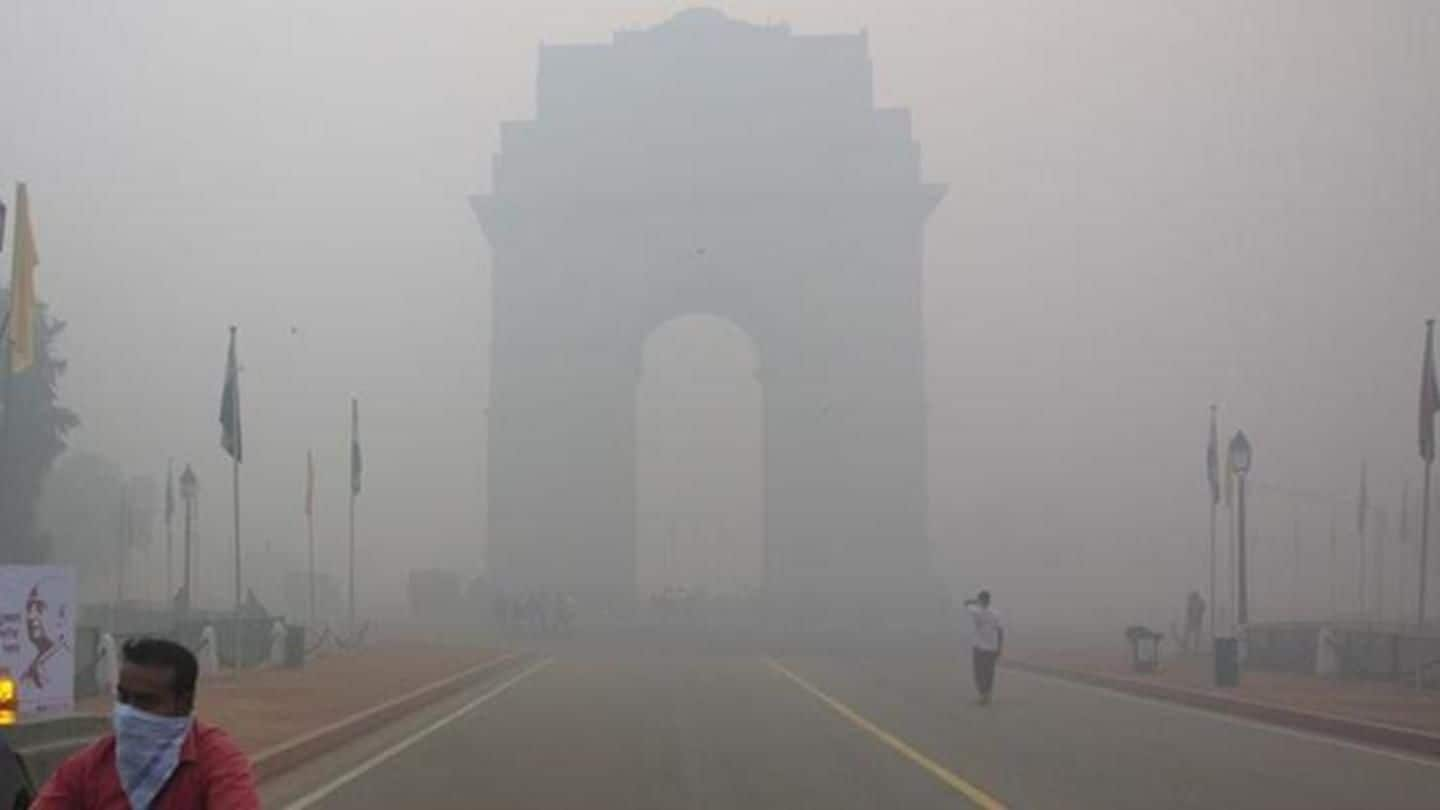
Delhi: Air quality poor, expected to worsen further
What's the story
With Diwali just over a couple of weeks away, Delhi's air quality has dropped to the 'poor' category with a pollution cloud hanging over its head.
On Saturday, PM10 and PM2.5 levels fell to 267 and 226 respectively, both in the 'poor' category, at Delhi's Lodhi Road.
Air quality is expected to decline further as winter set starts to set in.
Here's more.
Projections
Air quality expected to decline further owing to several factors
According to a senior official from the Central Pollution Control Board (CPCB) air quality in the national capital is expected to decline further as the combined result of stubble-burning in Punjab and Haryana, effigy burning on Dussehra, falling temperatures, and low wind speed.
Firecracker bursting on Diwali is also set to significantly contribute to the pollution cloud hanging over Delhi.
Firecrackers
There's no ban on firecrackers this time around
Yet, despite the expected contribution to air pollution Diwali, the CPCB has not imposed a restriction on the use of firecrackers this time.
Speaking to HT on the condition of anonymity, a senior CPCB official said they are awaiting a Supreme Court verdict on a nationwide ban on firecrackers.
Interestingly, the Delhi-based petitioners in the case expect the verdict any day now.
Quote
CPCB can act after SC gives its verdict
"We are anyway not responsible for the sale of firecrackers - it's the respective state governments. Once the SC delivers its judgment, we will monitor the improvement in air quality during Diwali. We can also issue advisories based on SC judgement," added the CPCB official.
Last year
Restrictions on firecracker sales did not work last year
Last year, the Supreme Court had ordered a suspension in the sale of firecrackers in Delhi-NCR till November 1, in a bid to try and reduce firecracker use during Diwali.
However, subsequent analyses by Centre for Science and Environment (CSE) revealed that the use of firecrackers was still rampant on Diwali, which led to PM2.5 levels doubling the day after.
'Gas chamber'
Last year's experience indicates a tough time ahead
Around this time last year, the air quality index (AQI) in Delhi remained in the 'severe' category - 401 and above - for a whopping nine days, prompting Delhi CM Arvind Kejriwal to call Delhi a "gas chamber" and declare a public health emergency.
Subsequently, extreme measures to try and curb pollution were taken under the Graded Response Action Plan.
Yet, stubble-burning remained unaddressed.
Stubble-burning
NASA images indicate no change in stubble-burning
NASA images collated by scientists from the University of California showed worrying signs.
Between September 18 and October 19 last year, 7,040 and 2,968 fires were observed in Punjab and Haryana respectively.
In the same period this year, the figures for Punjab and Haryana stood at 2,056 and 1,985 respectively.
However, more fires are expected as this year as the paddy harvest was delayed.
Quote
No improvement in stubble-burning this year
"There is no significant improvement in stubble-burning this year because AQI in the Indo-Gangetic plains region is quite bad already, unlike what Haryana and Punjab governments have claimed," said Sadanand Wachche a researcher at the University of California.
Spike
Signs of air pollution spikes are already showing
Meanwhile, air pollution in several other north Indian cities like Lucknow, Kanpur etc. has also started to peak.
Although the yearly onset of heavy air pollution was delayed by a couple of weeks thanks to untimely September rains this year, signs of spikes are already showing - NASA satellite images from Friday showed high aerosol optical depth (AOD) over north Indian states.